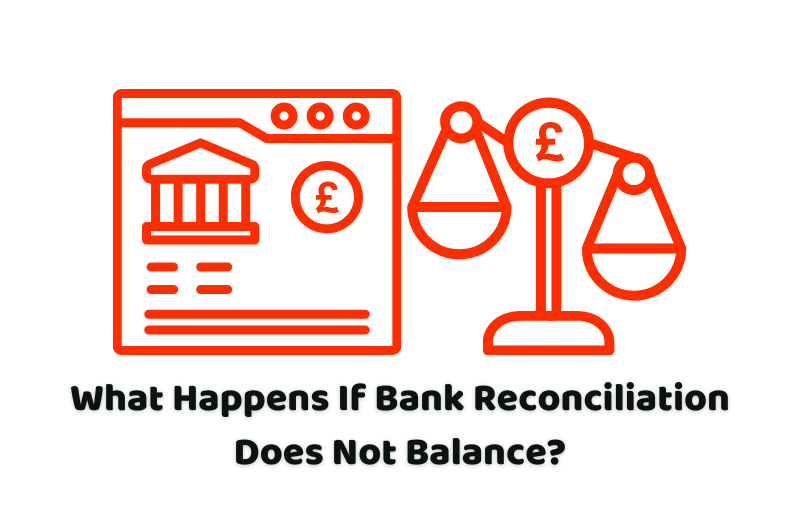What Happens If Bank Reconciliation Does Not Balance?
Companies in the UK often rely on bank reconciliation to check for any fraudulent activity. This is one of the important factors when it comes to bank reconciliation. Have you ever wondered what happens if bank reconciliation does not balance? This article explains what to do if such a situation happens to you. Continue reading to learn more about it.
Talk to one of our intelligent and clever professional bookkeepers to get your further queries about bookkeeping services in London. We will ensure to come up with the best possible solution for you.
The Role of Bank Reconciliation in the UK
Bank reconciliation is the process of bookkeeping in which the bank statement and the company account register are compared for the entries of transactions and payments done by the company or an individual during a financial year. The bank reconciliation allows you to check for fraud, illegal payments or transactions, in-transit deposits, and outstanding cheques. Bank reconciliation is the need of limited companies as well as individual businessmen.
How Often Should Bank Reconciliation Happen?
Bank reconciliation is crucial for maintaining transparency in your business. Therefore, it is strongly advised to do it periodically on a regular basis. The bank reconciliation can be done weekly, monthly, or yearly. The duration of the bank reconciliation period depends on the size of your limited company. For larger businesses, it is easier to do weekly bank reconciliation so that the audit is done quickly and efficiently.
If you do not do weekly bank reconciliation in a larger business setup, in the longer duration more data accumulates, which would be difficult to manage by the accountants of your company. However, for smaller businesses, bank reconciliation can be done on a monthly basis, whereas at the individual level, you can do your self-assessed bank reconciliation at the end of a financial year before filing a tax return to the HMRC.
Visit our more detailed guide on what is bank reconciliation, we have covered in-depth knowledge of bank reconciliation over there.
What is the Procedure for Bank Reconciliation?
Bank reconciliation consists of the following steps:
- Obtain the records: The first step is to obtain a bank statement from your bank on the set duration of your bank reconciliation process. At the same time, obtain the records from the company account register, other transaction receipts, data of outstanding cheques, in-transit deposits, and any advance payments done by the company.
- Compare the records: The next step is to compare the entries on both records. The accountants need to be vigilant at this step. They should check for mismatched entries and find the reason why the entries are not aligning.
- Adjust bank statement: If the entries are not aligned in both records, accountants try to adjust the bank statement first. The bank statement can be adjusted by deducting the bank fee charges, transaction charges, and interest imposed by the bank on your balance.
- Adjust company register: The next step is to adjust the company record register and collect all the receipts and related proofs of payments made by the company. In this step, the accountants adjust the company account register, add the bank fee charges, deduct in-transit amounts that are in the company record but not in the bank records, and remove all outstanding checks from the account register. This is the amount that the company expects to be paid by the client.
- Compare balances in both records: After necessary adjustments in both records, compare the balances in both records. After all the adjustments, the balance in both records should be the same.
What Happens if Bank Reconciliation Does Not Balance?
What happens if bank reconciliation does not balance both records? This indicates some error in the company’s cash flow management. It can be duplicate entries, wrong entries, a mistake that is overlooked, or a missed entry in one of the records. Accountants need to consider all possible errors when the bank reconciliation does not balance.
There may be new transactions during the reconciliation process that are not included in the bank statement. Companies should reconcile each transaction to clear out the ambiguities in the bank reconciliation process.
If the balances don’t match, there should be
- An incorrect statement date mentioned
- Incorrect ending balance in one of the records
- The same transactions in both the records have wrong date, causing ambiguity in the reconciliation process
- The initial balance mentioned in the account register does not match the starting balance in the bank statement
- A wrong balance was saved as a previous bank reconciliation. In this case, the accountants need to dig deeper into previous reconciliations to rectify the error in calculations.
The Bottom Line
The bank reconciliation process is vital for maintaining transparency in the company’s cash flow. The bank reconciliation process is simple, yet the accountants need to be vigilant while comparing both records. The errors might be due to a wrong entry, a wrong date mentioned on the same transaction, or a wrong initial balance mentioned on the bank statement or company account register. If bank reconciliation does not balance, where the current reconciliation does not have any error, but the previous reconciliation was done incorrectly. In such cases, the bookkeeper might need to recheck multiple previous reconciliations to rectify errors in the calculations. Bank reconciliation remains the cornerstone of maintaining company growth.
Disclaimer: All the information provided in this article on what happens if bank reconciliation does not balance, including all the texts and graphics, is general in nature. It does not intend to disregard any of the professional advice.

